Owen Beaumont, Liam Andrews, Josh Fusiara
Before embarking on our birding adventure, we recognized the need to establish a clear set of rules. After examining various birding day lists and races, we identified three main categories for these rules; time, location, and record quality. Regarding time, we designated a 24-hour period from midnight to midnight, deliberately excluding the option of starting, for example, at 6am Saturday and extending until 6am Sunday. Although spanning two days could introduce intriguing strategies, it didn't seem in the spirit of the challenge.
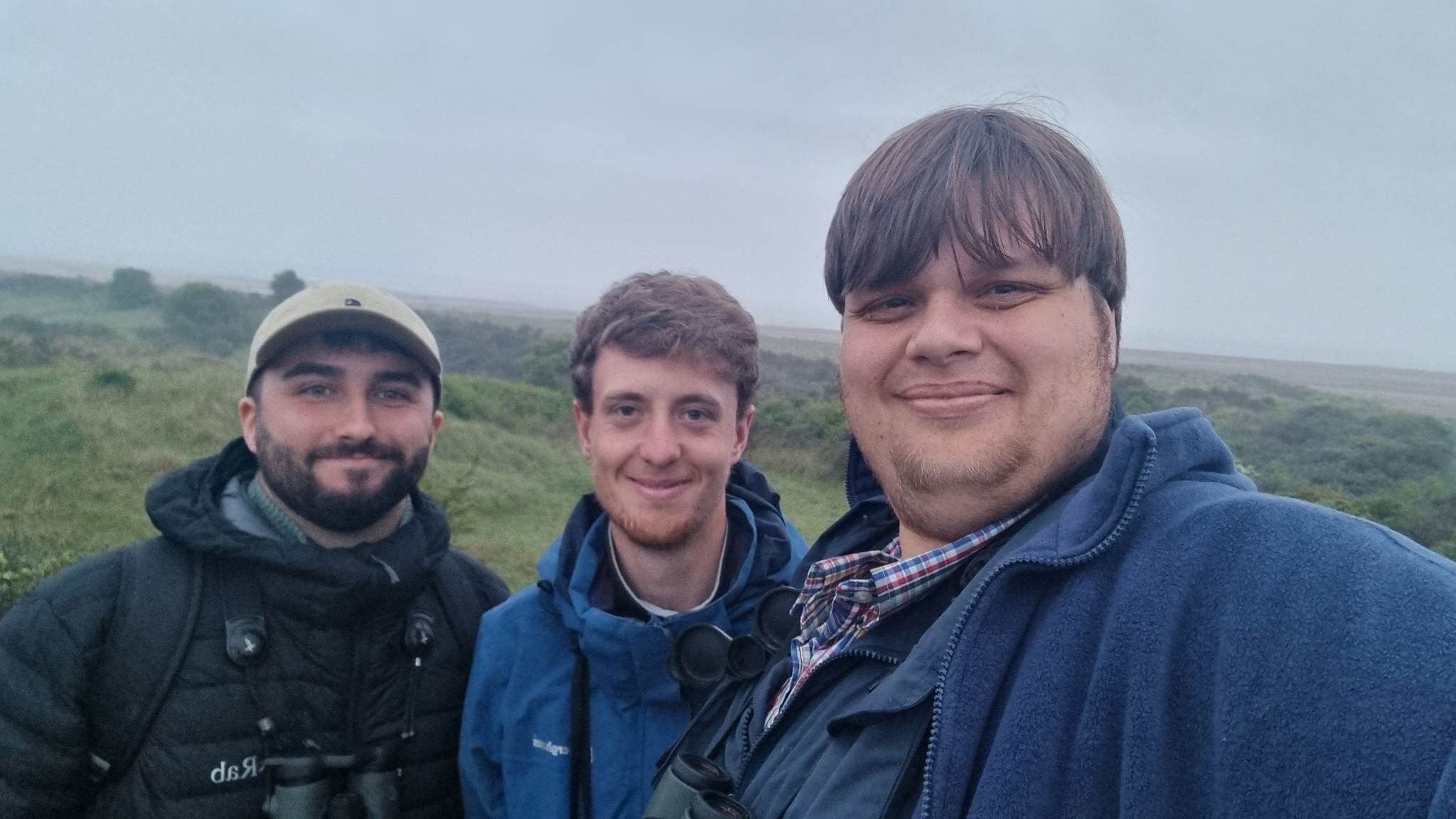
For the location aspect, we opted to focus on the historic country of Lincolnshire, as covered by LBC, thus avoiding any contentious areas. As for record quality, we agreed that Lincolnshire or national rarities would require acceptance from the respective committees to be counted toward the day list total long-term. We also agreed that heard only species could be counted, as this still felt within the spirit of the day and would not impact the quality of records. Additionally, we decided that each species must be observed by more than half of the group. As a group of three, this meant that at least two of the members needed to see or hear each species for it to be counted on the list. Requiring more than half to witness each bird prevented the merging of separate lists and ensured cohesion. We also acknowledged that it might be challenging for larger teams to collectively spot all species during activities like sea watching or visible migration, although, in practice, our entire team managed to do so.
Following the establishment of rules to follow, we began planning the day itself. The big question was when. If we started too early, we would miss out on a wide variety of migrant breeders. On the other hand, if we started too late, we might miss the chance of some finches, thrushes, and wildfowl. It seemed like a lose-lose situation for all scenarios, but we eventually settled for a middle ground and went with 7th May. With this date, we believed that, while it might be more difficult to find birds like Nightjars and Swifts, we were more likely to come across Redwings, Fieldfares, and finches if we got lucky. As for wildfowl, we hoped to spot a few lingering winter species at coastal sites.
The next significant question was where to go. We compiled a list of sites and carefully planned the best routes between them to minimize driving time, especially during key times of the day such as dawn and dusk. The details of our route will become apparent below, however, the highlight of our plan, and what we hoped would set us apart from previous records, was a morning session at Gibraltar Point NNR. We had previously completed day lists at Gibraltar Point that far surpassed the 100 mark despite the site having a long list of tricky species which would be more achievable elsewhere. This strategy seemed to offer the best chance of success.
The day list started at 00:00 on the dot, just as we pulled into Crowle Moor; our first of multiple destinations for the day. With the potential of hearing Crane from just over the border, and us knowing that Willow Tree Fen would be too far away on the day, we knew this was realistically the only chance we’d get at this species. Along with some of the classic heath breeding species, it could have taken some pressure off from exploits later in the day, should we be successful.
It was a still, mild evening, and although there was some dampness in the air, we had a walk along the main path at Crowle. Rather predictably, the first species on the list was a Woodpigeon crashing out of a tree….not quite enough to build spirits or motivation further, but at least it was a start! Tawny Owl and Barn Owl were quickly added to the list, along with a few common wildfowl species calling in the night. Unfortunately, however, a Crane stakeout was unsuccessful and the hoped-for heathland specials were also not obliging. With the best part of a whole hour of the day gone, we knew we didn’t have another second to spare, so we ambled back to the car before heading to stop number two.
Not knowing where the day would take us, we decided to get Bittern out the way nice and early with a trip to Far Ings. The car park was closed with it being the early hours, so we drove past this and to the next viewpoint by the roadside. It only took a few minutes for a Bittern to start booming, along with some keen warblers and wildfowl adding further to the list. The highlight from Far Ings came in a non-feathery form, with a Marsh Frog heard calling just next to the viewpoint for most of the time we were at the reserve; a rather unexpected county first! By this time we had started to think about daylight, which was still a couple of hours away, but in a county like Lincolnshire where it’s impossible to navigate between sites quickly, it was time to continue our journey.
Our initial plan was to spend the first few hours of daylight at Gibraltar Point NNR, and this was indeed what we decided to do. We started our journey into the Lincolnshire Wolds just as the fog started to thicken, but this didn’t seem to stop us adding to the day list as an unexpected Nightjar flew off the road adjacent to some plantation woodland. After a few unsuccessful stops to listen for Partridges and still in thick fog, we arrived at Gib about half an hour before daybreak.
Following a short stakeout in the main car park, and adding a few birds including Grasshopper Warbler, we headed back to beach car park and walked out to Mill Hill. With visible migration and seawatching providing some good species in recent days, this was where we had hoped would be the most productive place to kick-start a record-breaking list. Spirits were somewhat dampened with lingering thick fog, but a slither of the sea eventually showed itself and views back inland gradually improved, too. ‘Vis-mig’ was fairly non-existent, with little of value flying over the dunes on the day, but seawatching was surprisingly useful with species including Gannet, Sandwich Tern and Little Tern very welcome additions. The morning high tide was well-timed for our morning visit, so a nice suite of waders were ticked off as they were pushed off the Wash. The highlight of the morning was a bit of day list gold in the form of a Long-eared Owl, which landed in a nearby hawthorn briefly before disappearing into the dunes.
After a few hours on Mill Hill, we walked back inland to check the water bodies, adding other common waders and wildfowl, along with Pink-footed Goose; another useful addition to any May day list. Our improvisational tactics then took us towards the Wash viewpoint and visitor centre, where a few Wheatear were present and Marsh Harrier picked up with ease over the saltmarsh. On a final scan back over the saltmarsh as we were leaving, a ringtail Harrier flew across and gave some tantalising, yet ultimately unsatisfactory views. With the bird still flying around, we left it in the capable hands of a local birder, who thankfully got some closer views just after we left and confirmed it as a Montagu’s Harrier….some proper day list gold!
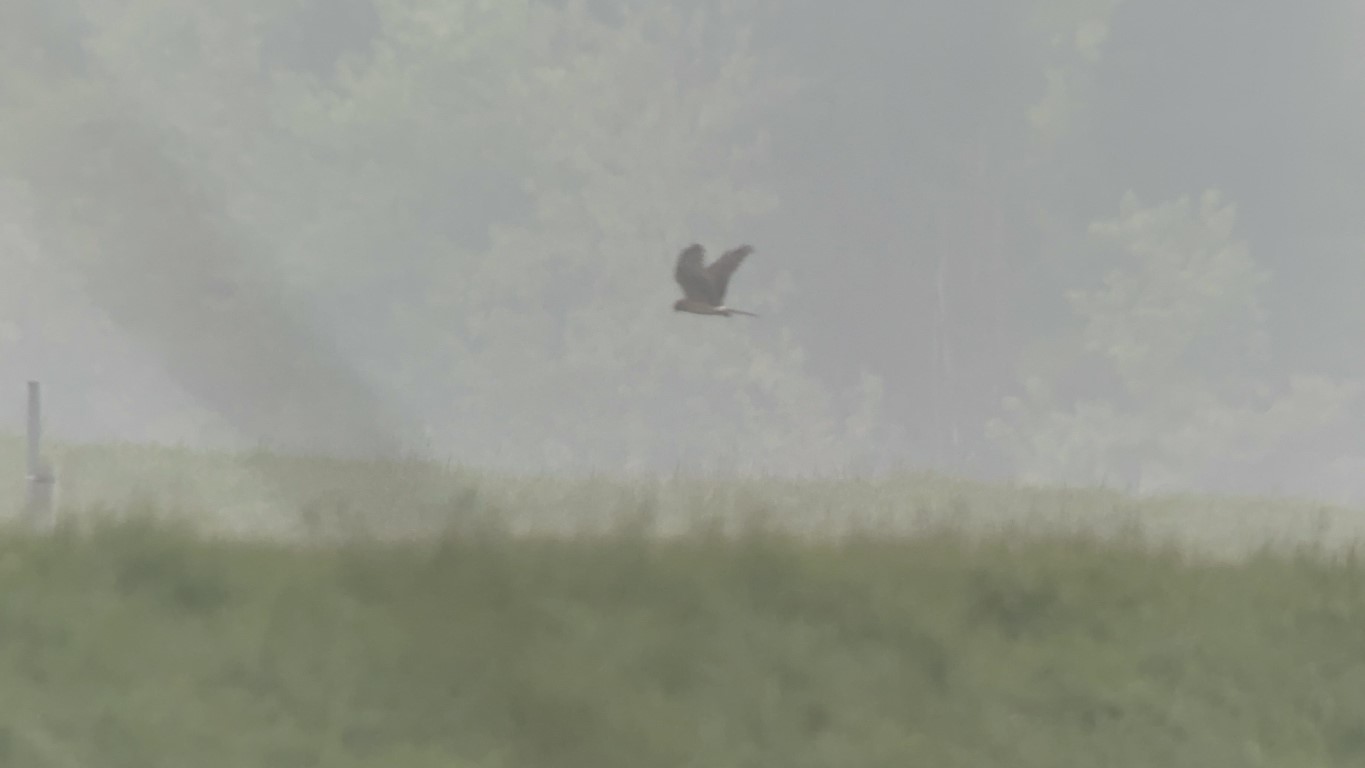
Montagu's Harrier at Gibraltar Point - Josh Fusiara.
With a range of rare and niche birds in recent days, we decided RSPB Frampton Marsh would be another key site for us on the day, so as we reached mid-morning and the fog cleared, it was time to head west. By this time, our tally was very unimpressive having been hampered by the morning fog, but, as we’d received helped from a number of kind Lincs birders to set the day up, we knew we had to carry on and try to retain some respect!
With some leeway in time, an opportunistic dash to RSPB Freiston Shore made for a productive flying visit, adding species including Eider and Tree Sparrow at the reserve, plus Little Owl (the final species of Lincolnshire’s resident owls), Red-legged Partridge, Corn Bunting and Yellowhammer in nearby fields. Peregrine was a nice tick as we navigated through Boston, and as we got to late morning we arrived at Frampton.
Wood Sandpipers and a drake Garganey within metres of the car park were excellent and quick additions to the list, so we walked down into the main reserve to try and catch up with the rarities. The pair of Black-winged Stilt and drake Blue-winged Teal took a bit of time up to walk to, but were easy to see and also helped us see some other species like Pintail, Mediterranean Gull and Spotted Redshank, to name a few. The main omissions from this visit were Little Stint and Curlew Sandpiper; both of which had been reported on the day. This was a little irritating, but we didn’t have time to scan for too long.
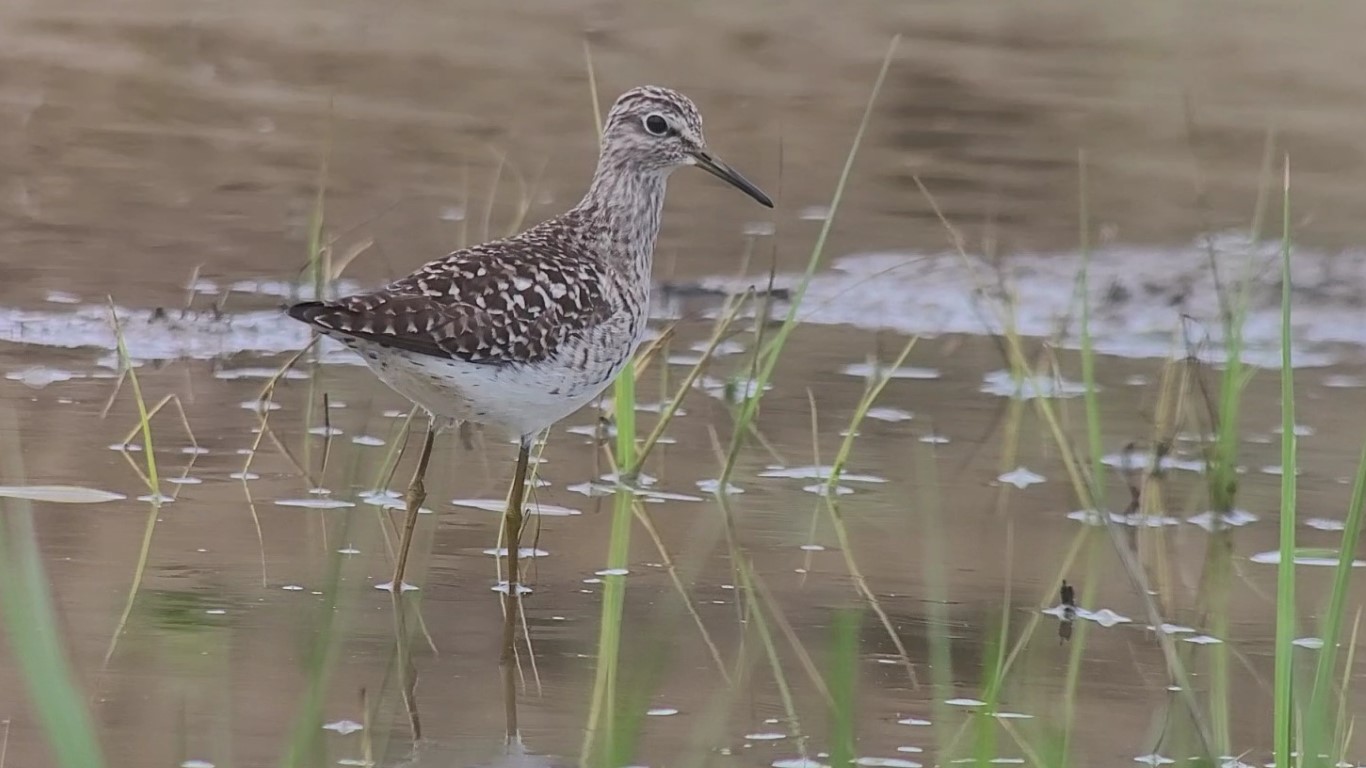
Wood Sandpiper at Frampton by Owen Beaumont.
Following a successful few hours we were now over the 120 mark and starting to believe we might actually get close to the existing record, so being into early afternoon, we agreed it was time to start heading back north - where we needed to be for late afternoon and dusk for some additional target species. As predicted, the drive was a long one time wise, so it was near enough a straight point-to-point, with the exception of a quick pit stop to Woodhall Spa LWT. Woodhall was pretty handy on reflection, with Egyptian Goose and Green Woodpecker the best additions, both species which we didn’t manage anywhere else along the way. The rest of the drive north helped to add Red Kite and Grey Partridge; another couple of handy additions!
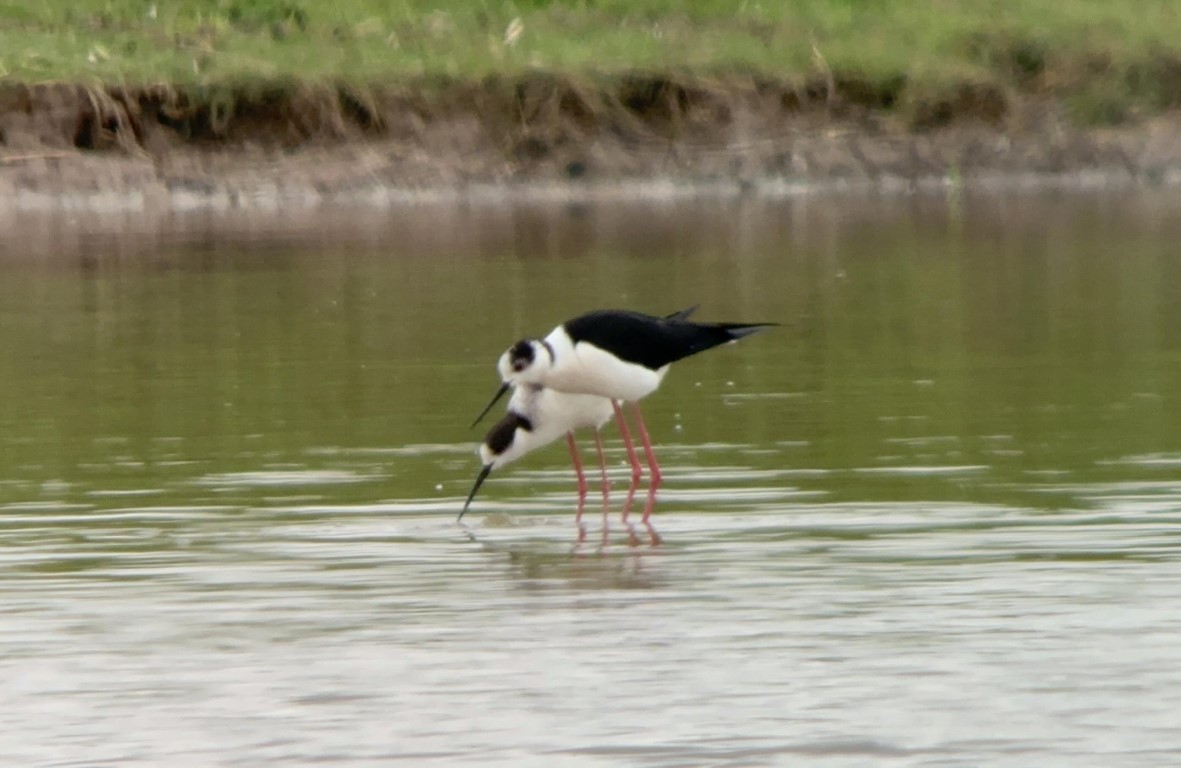
Black-winged Stilts at Frampton RSPB by Josh Fusiara.
Arriving at woodland in the north of the county, it took less time than expected to see the target specialities, including Jay, Woodlark, Tree Pipit, Goshawk and Raven. So, with some time to play with before dusk, we shot up to Alkborough Flats and, with help from local birders, we managed to see a couple of a few species in the form of Bearded Tit, Grey Wagtail, Greenshank and some Barnacle Geese (which didn’t leave us feeling as dodgy as our back-up plan of the Cleethorpes population!). Sadly, despite being seen earlier in the day, Hobby eluded us during the visit, but, following local advice, we popped over to Bagmoor Lake where Kingfishers were being seen regularly. It didn’t take long for two to appear, which meant we were now level with the previous record. The pressure was now on to beat this, and to our relief, a few Common Snipe also appeared around the margins as the light started to fade. We had done it, 139 had been reached and we still had several hours left to try and scrape another for a nice round 140.
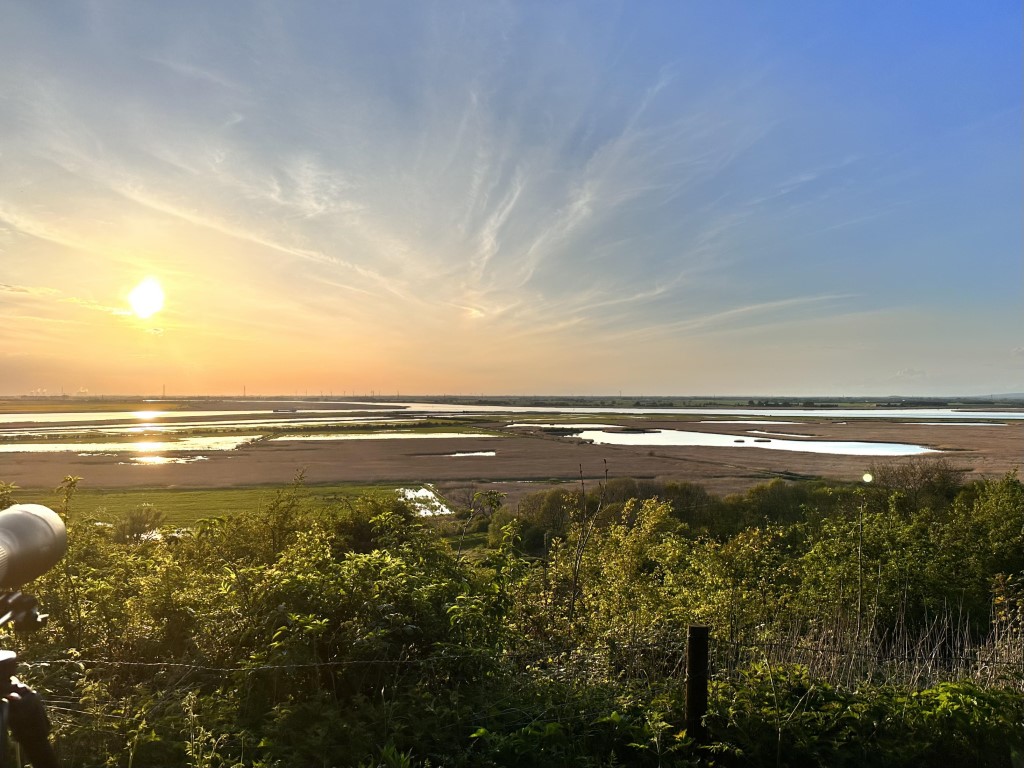
Alkborough Flats at Duck - Josh Fusiara
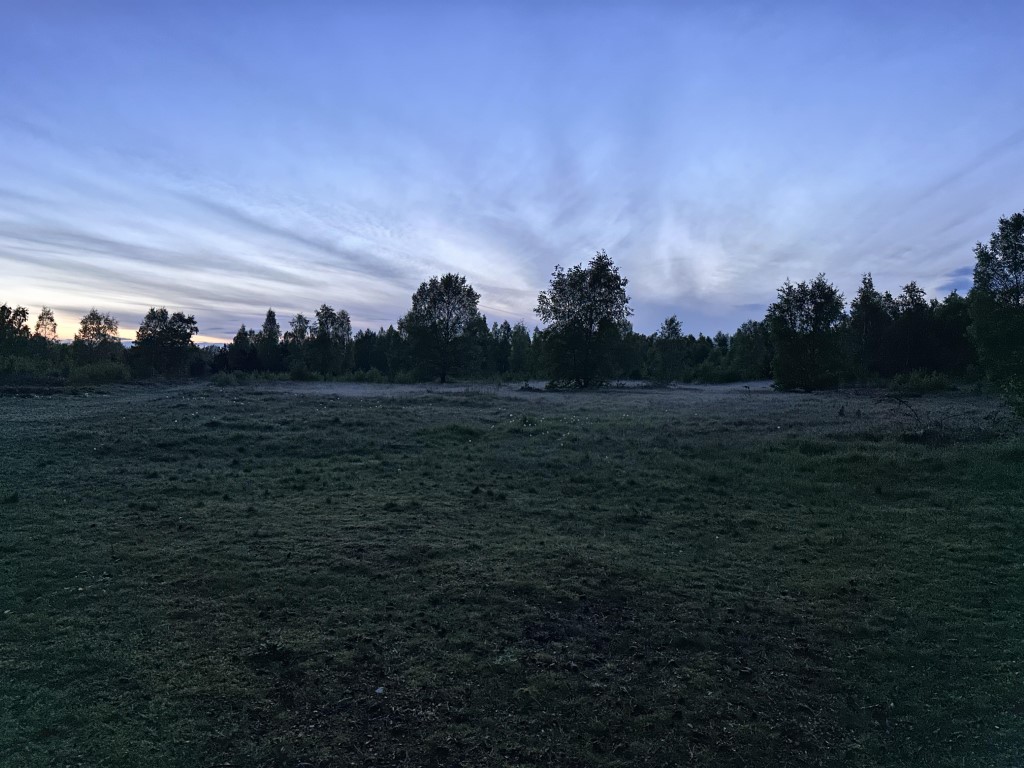
North Lincs Heathland
It was now time to see out the day with Woodcock, the final target species. Upon returning to the woodland, and after a short wait whilst being serenaded by churring Nightjar, a few roding Woodcock made their way over the area….mission success! At around 22:30, this was the final tick, taking us onto the total of 140; a new Lincolnshire Day List record!
Although we managed a hefty dose of jamminess throughout the day, the worst omissions from the final day list tally included (but were not limited to!); Bullfinch, Green Sandpiper, Hobby and Stonechat. With extra portion of luck, and a more productive day for migrant arrivals, there is no reason why 150 species would not be possible to achieve. Good luck to anyone wishing to take on the challenge!
Just to finish the reflection, I hate to think what embarrassingly low score we would have been stuck on without help from some experienced Lincs birders. As such, we’d like to take this opportunity to say thanks again to all the people who helped us leading up to, and during, the day list, with special thanks to Wayne and Clare Gillatt, Graham Catley, Neil Drinkall, Kevin Wilson, Nige Lound and Andy Sims.









